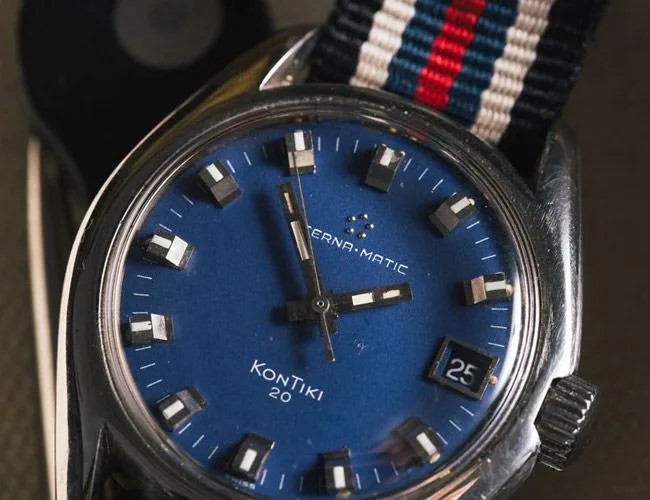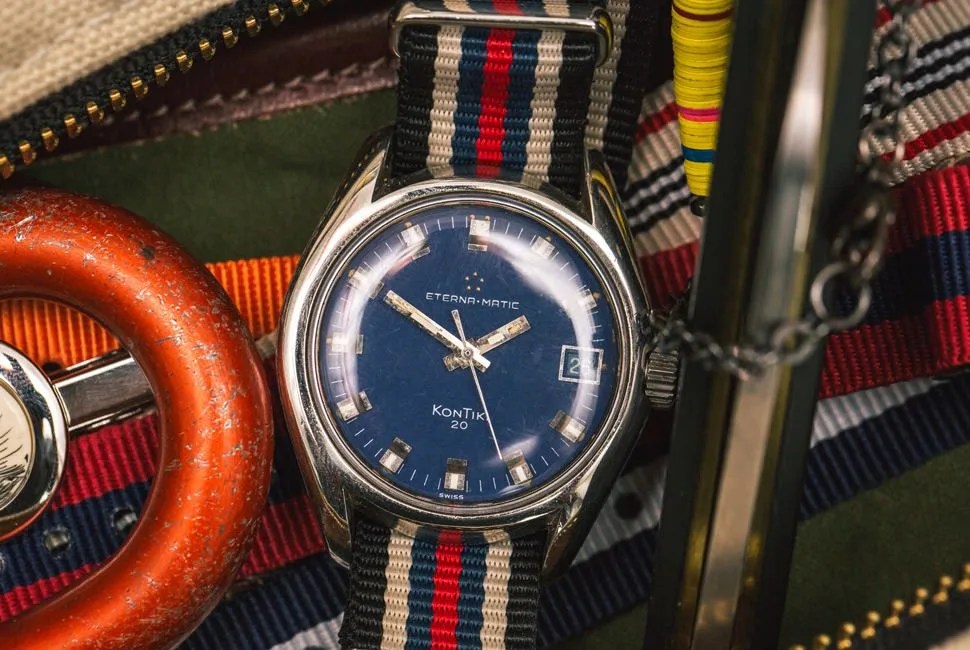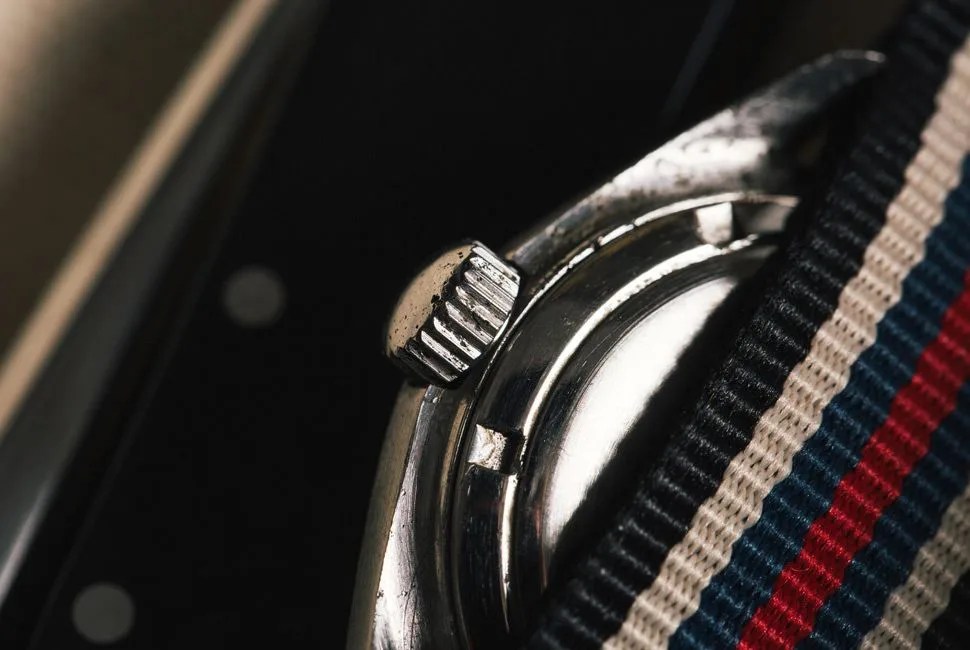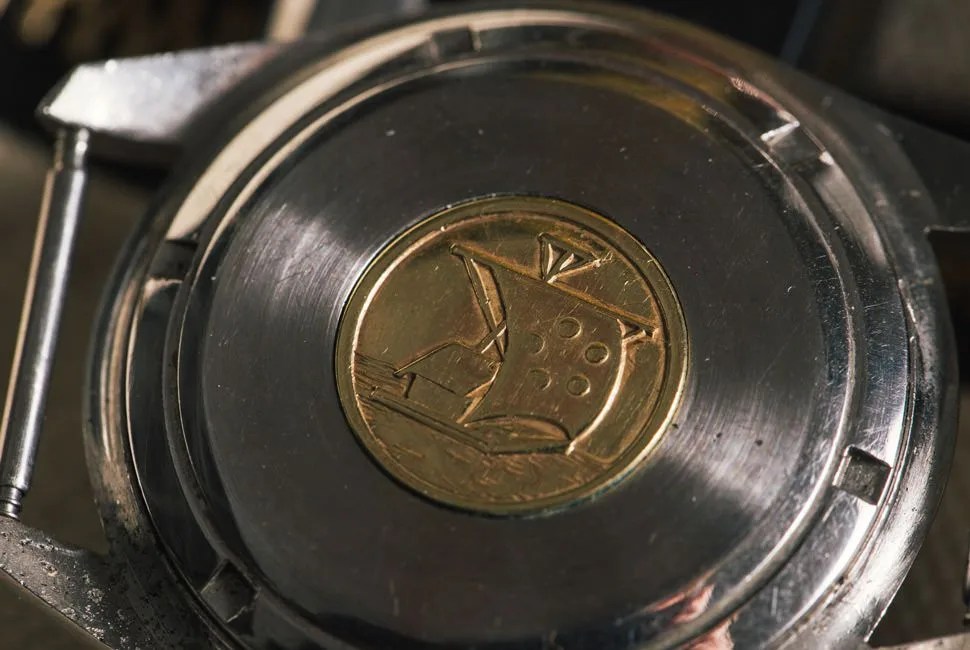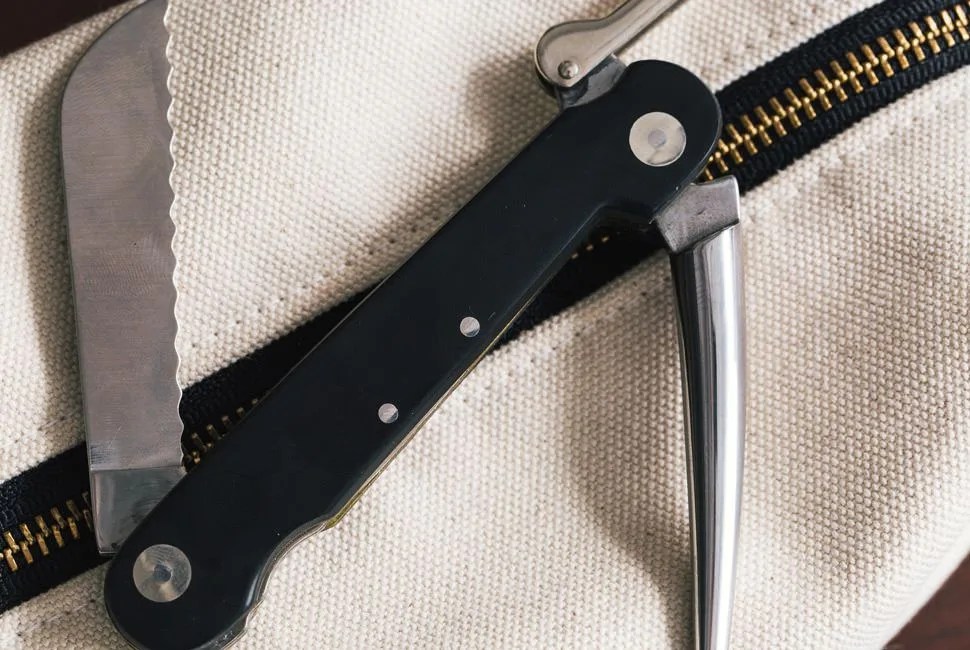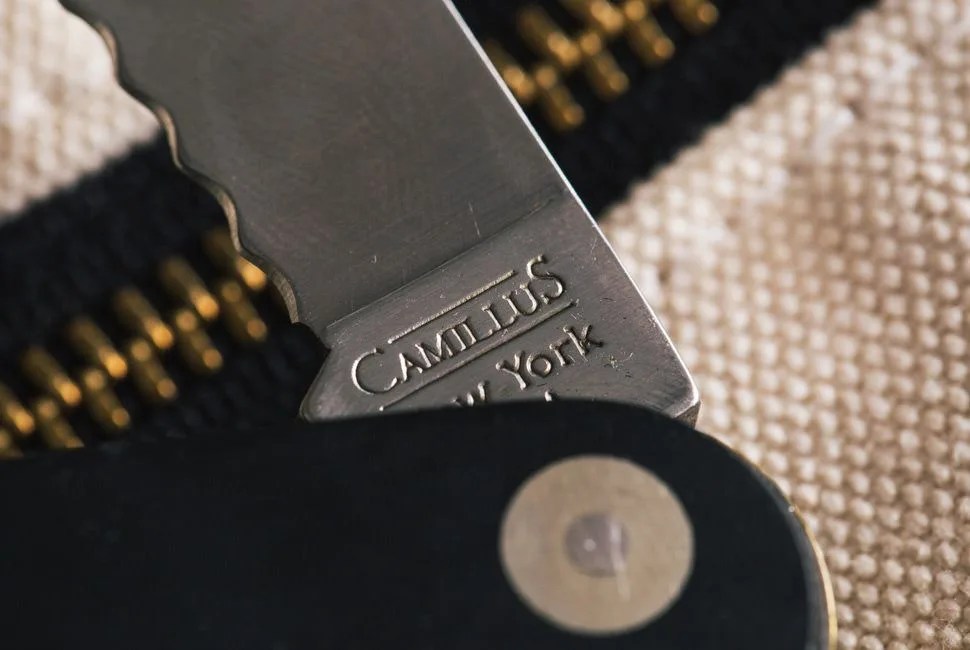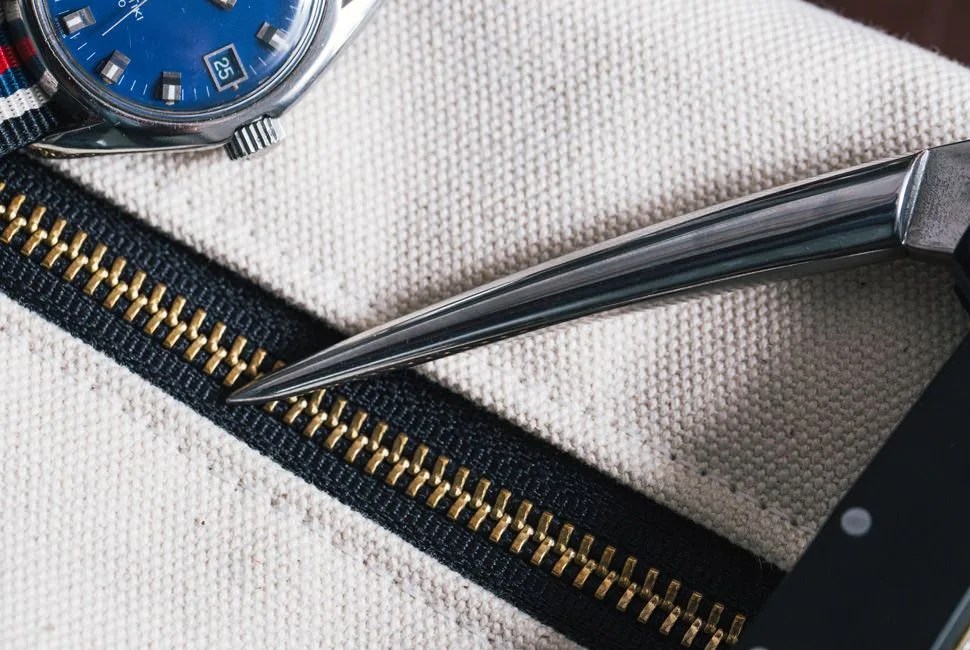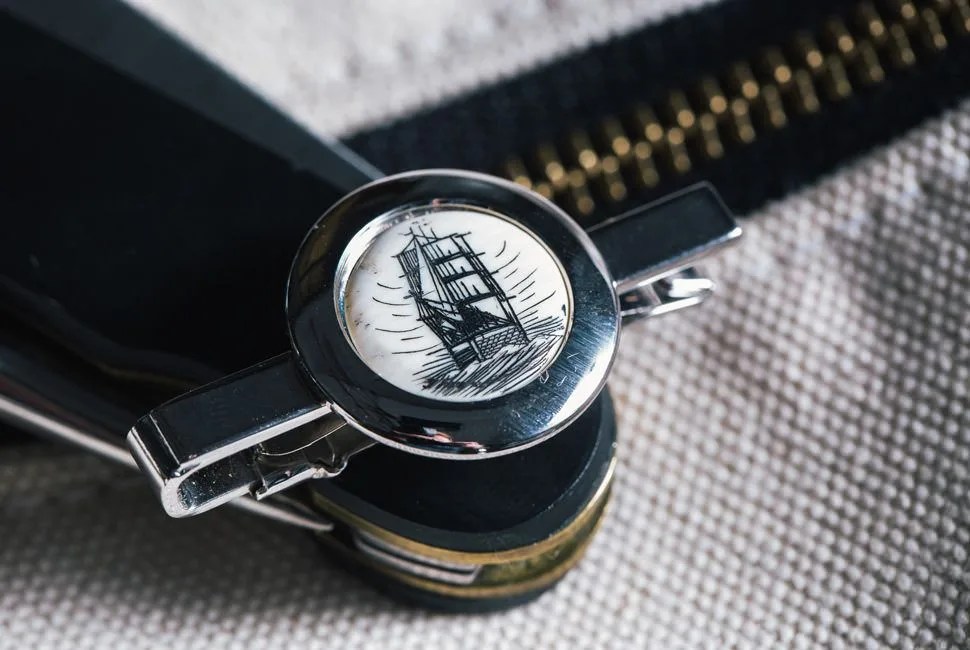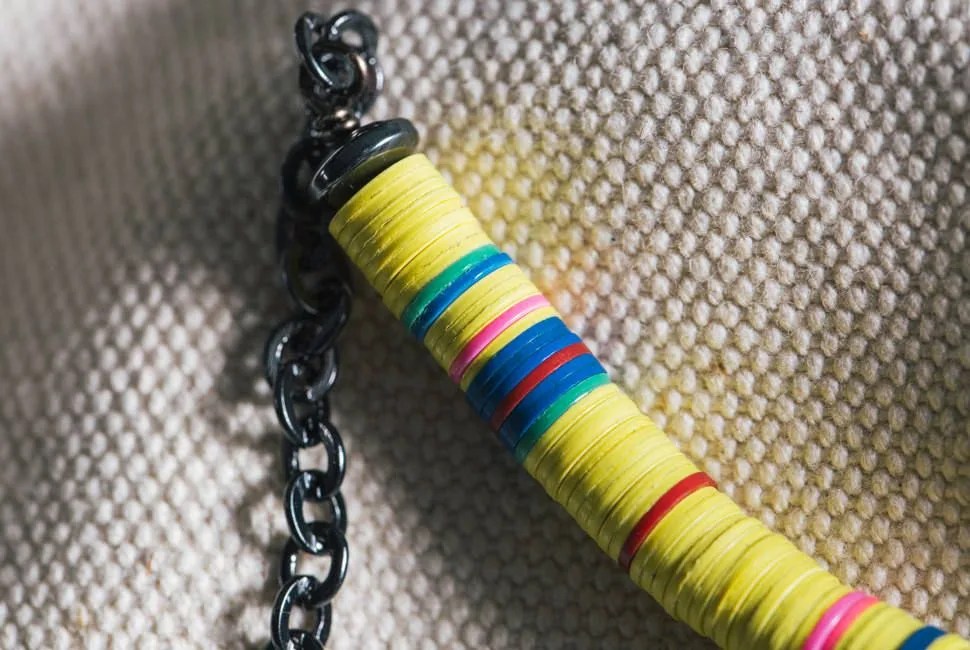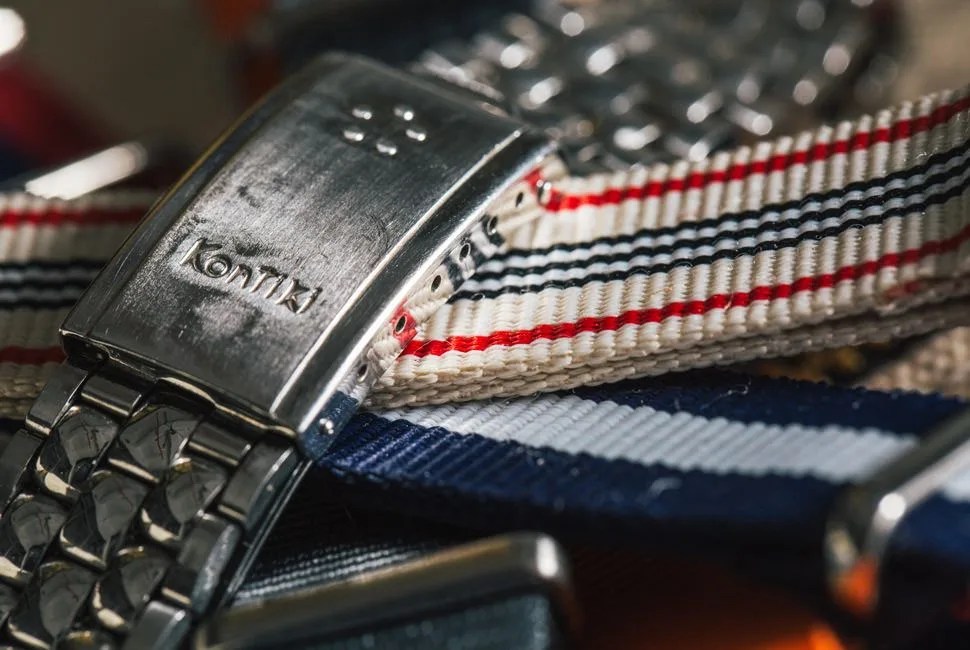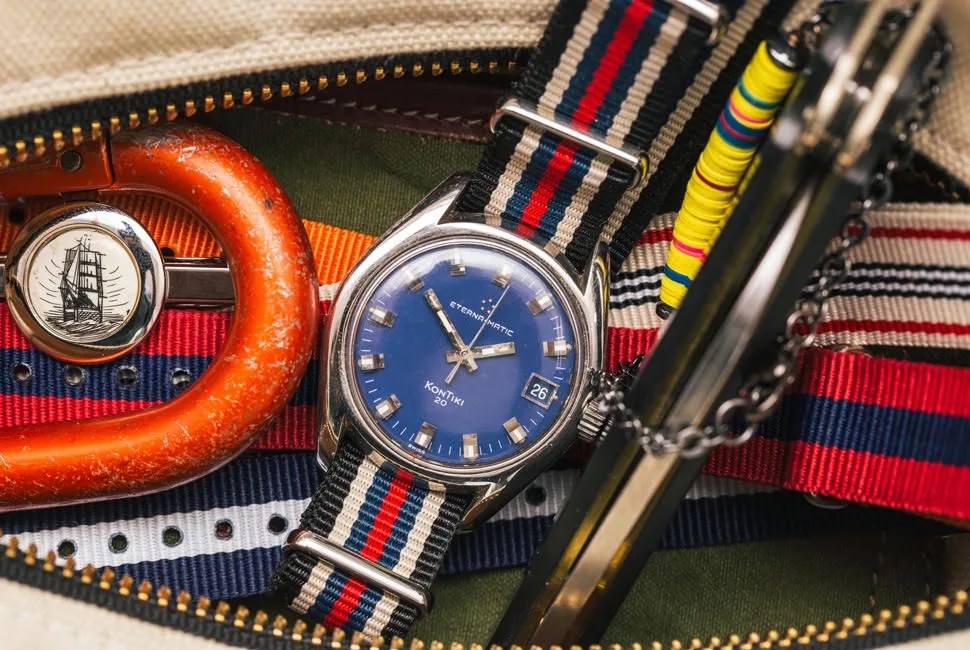13 photos
In the spirit of exploration, we’re bringing back our popular (and completely sold out) series, Timekeeping Selects — a partnership with Analog/Shift, the New York-based purveyor of vintage watches. As before, we’ve done the legwork for you, scouring sources to find cool, unique old watches with impeccable authenticity — all serviced and ready to wear. To mark the new year we’ve invigorated the series with a special twist: this time, each watch includes several handpicked accessories for a complete ready-to-go kit, with each item selected to pair with the watch. Each week, we’ll bring you a new watch across a wide variety of price ranges paired with its matching accoutrement (both vintage and new). Because these watches are more than just ways to tell time — they’re each representatives of a distinct way of life. Say hello to your new carry.
August 7th, 1947 — After 101 grueling days and 4,300 nautical miles, Thor Heyerdahl and his crew sailed their rickety wooden craft into a reef on the shores of Raroia, one of the Tuamotu Islands, completing one of the most historic and controversial crossings of the Pacific Ocean.
Heyerdahl, a Norwegian ethnographer, botanist and zoologist, devised the voyage in order to prove it was possible for primitive crafts to traverse the Pacific with relative ease. Despite the presence of evidence to support his claims, the larger scientific community remained unconvinced that crafts of such rudimentary design could survive a cross-Pacific voyage.
To prove the journey was possible, Heyerdahl constructed a raft — which he christened the Kon-Tiki, after the Incan king who had made the journey according to South American lore — using only materials and technology that would have been common to the people of South America in early history.
Defying the odds, Heyerdahl and his team struck out, using only the current and the trade winds to propel them across the Pacific. The crew assembled a collection of modern and ancient equipment, including a store of US Army rations, hand-crank radios and six Eterna wristwatches.
Eterna had been building timepieces since the mid 1800s and had made many horological benchmarks along the way: They filed for the first patent for a mechanical alarm wristwatch in 1908 and the design for the world’s smallest production wristwatch in 1930. The simple watches that Heyerdahl and his crew used were subjected to — and survived — conditions to which many watches would have quickly succumbed.
